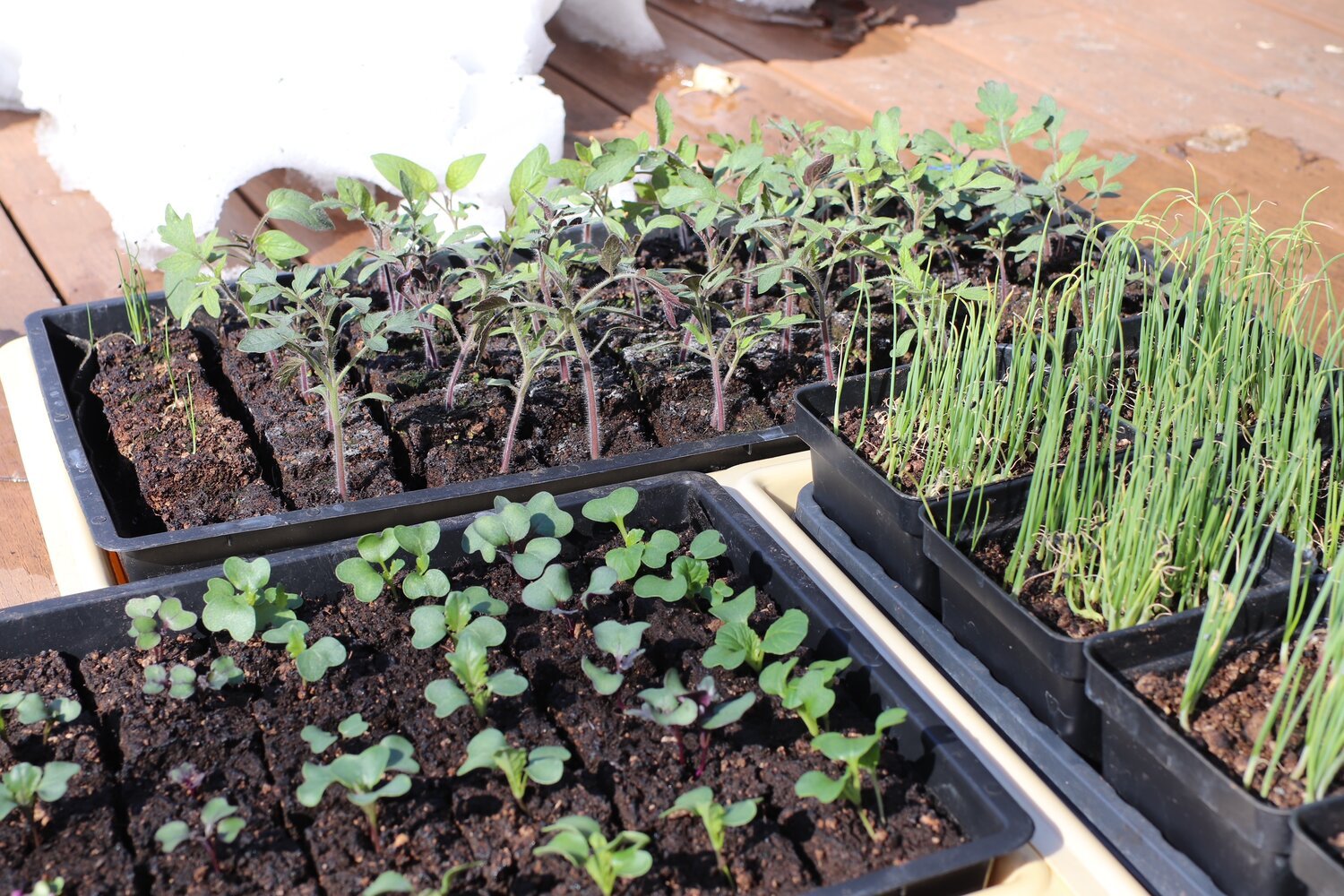The Art of Hardening Off
You did it! You grew your own garden starts from seed this winter. Congratulations! Now, let’s plant our gardens.
Not so fast.
I know this is the next logical step to planting a garden, but there is a very crucial and slow step in the process that we can’t just glaze over. And it’s called hardening off.
It can be frustrating. And boring. And deflate all the excitement for planting the garden. And, it can also be devastating to our seedlings if we don’t take the time to acclimate our seedlings to the bright, full sunlight slowly. Plants, like us, can and do get sunburned. If they are young and weak seedlings, it can be lethal, but at a minimum it will severely impact the plant’s vigor and potential and set them back many weeks.
In order to prepare our indoor-sown seedlings to the harsh reality of the outdoors, we must do it slowly. Basically, we are weaning them off a controlled environment with softer light and usually slightly warmer and even temperatures with zero wind to more of a wildly fluctuating environment. Let’s talk about how to do it well.
The Guidelines
From start to finish, properly hardened off plants take a good 10-14 days to be ready for their permanent home outdoors. Each day, you expose the plants to a little more full sunlight, alternating with shade (or if you’re up for it, bringing them back indoors). If the nights are above freezing and depending on what plants you’re working with, they can potentially stay outside once you begin the process.
It takes a few days for the sunburn to show, but this is what it looks like. I expose these tender globe amaranths to a day of partial sunshine and it was too much too fast. They recovered, thankfully, but were definitely setback because of it.
If, during this process, you have a cold snap and your plants return to their cozy, controlled environment indoors, you’ll want to start over again as soon as you can commence the process
The stop and start may happen, especially in our cooler climates where sudden bursts of winter return, even in spring. I tend to evict these seedlings to the deck and if they need to come back inside, all I can afford them in the south-facing slider until we can re-commence the hardening off process anew.
Some of my favorite ways to begin the hardening off process is by bringing the plants out in the mid to late afternoon as the sun gets softer. Dappled sunlight from tree branches is another soft landing for the first sips of full-strength, sunburning sunshine. Just a few hours the first day of partly protected sun is plenty of exposure.
Each day I add a little more light — 30-60 minutes depending on the conditions. A cloudy day is softer, though still stronger than our inside fluorescent and LED grow lights. If you’re a few days in and it’s cloudy, you can be much looser with your minute-counting. And if you are hardening off under cloudy conditions, you can keep the plants outside all day, if it’s deep cloud cover.
By the end of the first week, the plants should be outside in full to dappled sun for 5-6 hours, almost of “full day” of sunshine.
The Added Benefits
In addition to exposing our plants to the sunlight, the winds, precipitation, and temperature fluctuations are also key factors we are working with as we acclimate our plants to the great outdoors. This is the other key to hardening off. Helping ensure the stems are strong and can withstand high winds, backing off the warmth of the indoors to get them ready for transplanting into what almost undeniably will be cooler soils (excepting maybe in summer), and giving their plant cells time to literally do the hardening off, becoming stronger in response to the stronger light and variable winds.
But for all intents and purposes, it’s really the light that determines how you proceed with the process. The rest will follow in line. Get creative and develop partly shaded stations for your plants to acclimate. Enjoy the momentary slowing down, knowing that it will hasten the transition into the garden even though as you’re doing it you feel like you’re perhaps at a standstill. Fear not, this purgatory won’t last too long.
Transplanting the plants on cloudy days or with cloudy weather in the forecast is another favorite way to get them in the garden with a little buffer time in the early days to continue to harden off. This is more than a gamble, and I’ve had years where it was suppose to be cloudy all week and it was sunny and blue skies — and my still tender plants suffered as a result and got sunscald. They recovered, but it definitely knocked them back a few weeks. The extra few days I could have taken would have resulted in stronger plants that would have produced sooner. Lesson learned.
You know your garden best. How sunny is your garden? Is it 7 hours or 13 hours of sunlight? Our garden gets well over 12 hours of sunlight by midsummer and so when I harden off, I tend to take a little longer to be sure my plants are ready for a very full day of baking hot sun without any reprieve before I transition them into the garden.





